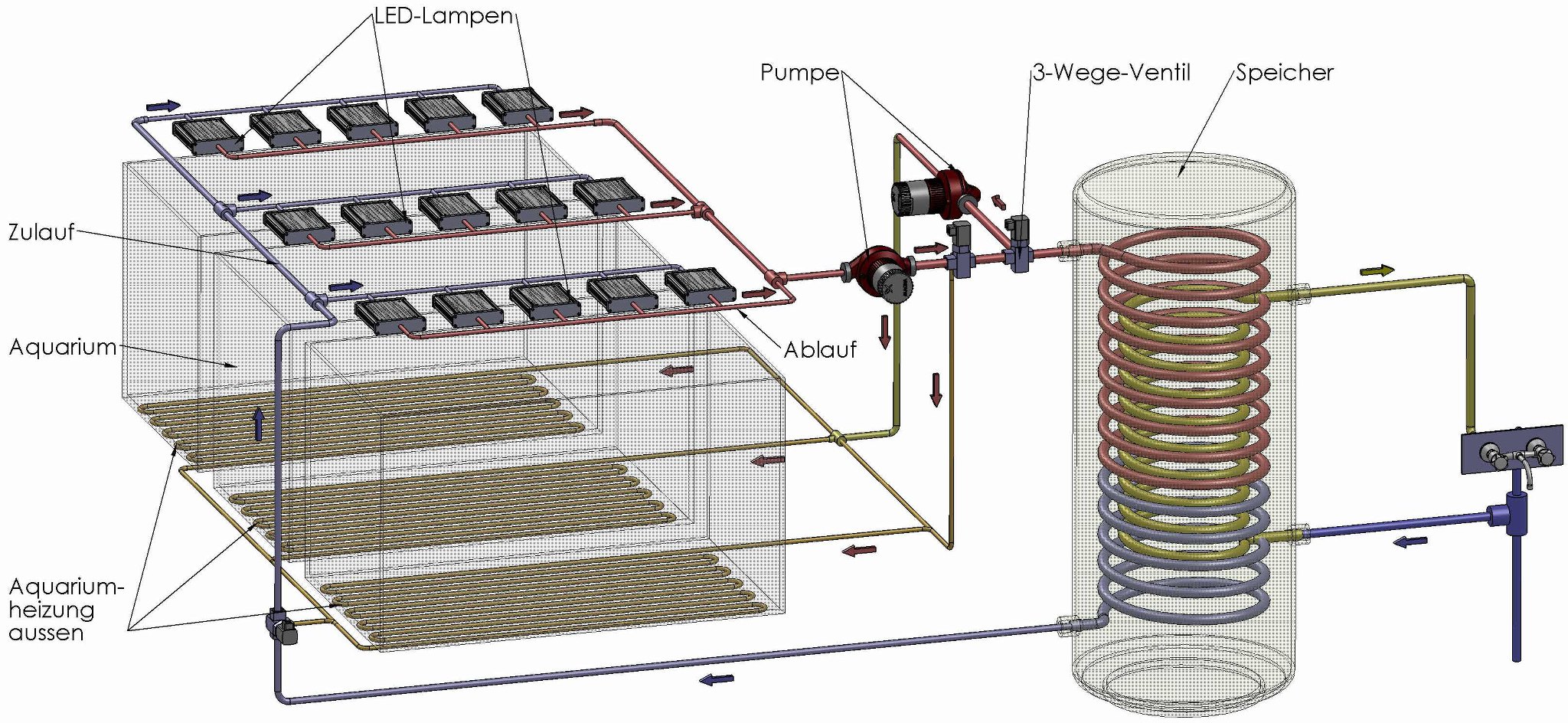As every reefers knows, the efficiency and longevity of LEDs largely depends on the temperature the chips are ran at. Cooler chips are more efficient and last longer, while hotter chips are less efficient and have shorter lifespans. For this reason aquarist have been intrigued with the concept of water cooled LED chips from the moment LEDs started to gain traction.
We’ve covered some freshwater cooled LEDs on Reef Builders, a DIY version that like the AquaInno concept uses excess heat to warm up the system, and a commercial system that simply uses a pump. Saltwater variations never caught up however, and for obvious reasons, the threat of corrosion being a big one but the addition of heat playing another major factor (LEDs tend to be ran at a much higher power and in higher density than fresh water variations). The fact that at this point LEDs are already efficient enough to grow light loving corals with small footprints has probably only added to the lack of water cooled fixtures.
AquaInno seems to think differently however, and has been working on producing water cooled LED fixtures, or rendering up design plans at the very least. Details are virtually lacking, but the diagram gives us quite a bit of juice just how this system might be working. The first thing that is apparent is that some of the heat from the fixtures is used to heat up the tank (note only some, as the system would otherwise boil the inhabitants, especially in warmer areas).
The rest is pumped through a coil which cools down the water to be used once again for the LEDs. Two automatic three way ball valves seems to be controlling in what ratio the water is used to heat and what ratio is cooled. The water used to heat up the aquarium is then plumbed back into the line towards the LEDs once again.
Strangely a third three way automatic ball valve appears right at this point, which seems counter intuitive considering there already are two three way automatic ball valves and the water has nowhere else to go. Two booster pumps are used to move all the water along. Now there is also what appears to be a faucet, which we assume implies that the system is directly plumbed into a drain and feed line, although the amount of water exchange is not entirely clear.
Overall the whole system is pretty impressive, and equally complex with a lot of points for failure. We also can’t imagine this being beneficial for all but the largest systems considering the prices of automatic three way ball valves alone, not to mention the need for a sizable coil and the installation of heat conductor inside the aquariums. It is however a very interesting concept, and a step in the right direction. When, at what cost, or if at all the AquaInno system will be released is at this point as certain as the number of planets in the universe, but who knows?



